This Federal Laboratory has played a pivotal role in creating our modern air traffic control system. Established as the National Aviation Facilities Experimental Center in 1958, the Technical Center’s research and engineering achievements, and its direct support to airports and FAA air traffic control facilities have led to the highest level of safety in air transportation.
AIAA
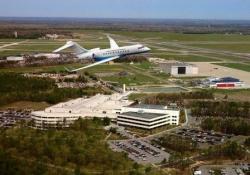
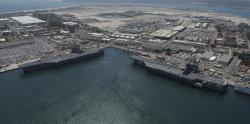
Known as the birthplace of Naval Aviation, North Island was the site of the first successful seaplane flight and the first amphibious flight in the U.S., both made by Glenn Curtiss. The first Naval pilot, Lt. T.G. Ellyson, was trained here at the Curtiss Aviation Camp. A flight school established here by Ellyson trained the next Naval aviators as well as the Navy’s first aviation maintenance personnel. North Island was also the site of the first night flight, and the home of the first aircraft carrier, the USS Langley.
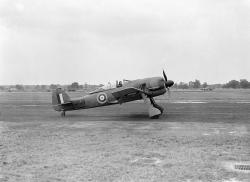
Farnborough's aeronautical history began in 1905 with the arrival of HM Balloon Factory in 1905, headed by Lt Col J.L.B. Templer. In 1908, the first powered aeroplane flight in Great Britain took place here, piloted by Samuel Cody. In 1912, Lord Trenchard established the first headquarters of the Royal Flying Corps and in 1918 the Royal Aircraft Establishment was founded.
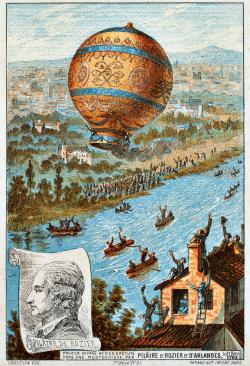
On 4 June 1783, Joseph Michel and Jacques Etienne Montgolfier captured the imagination of the world with their first balloon flight at Cordeliers Square. There were no passengers, but the Regional Council and the whole town population saw the machine go up and stay aloft at 500 meters for ten minutes. The scientific world raced to make use of the Montgolfiers’ discovery, and all accomplishments made since then by aeronauts, aviators, and astronauts can be traced directly to this site.

This site, originally the home of the Eclipse-Pioneer Division of the Bendix Aviation Corporation, has produced navigational instruments and engine components since 1938. Providing instruments that flew with Lindbergh across the Atlantic, and Admiral Byrd in the cold of Antarctica; from guiding American pilots in times of peace and war, to putting men on the moon, the “Bendix Invisible Crew” has been a leader in innovation and technology in the world of aviation and space exploration.
The Purdue University Airport was the first collegiate owned airport in the United States. It hosted Amelia Earhart for her final adventure, was the training ground for test pilots such a Jimmy Johnson and Ivan Kincheloe, balloonist Malcolm Ross, and astronaut Neil Armstrong. Purdue University Airport and its people and programs pushed aviation’s evolution to new heights and helped expand the frontiers of flight. During WWII, hundreds of U.S. Army and Navy members were trained at the airport.
T.S.C. Lowe’s Observation Flight
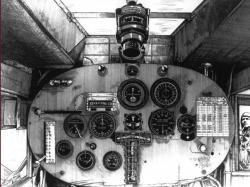
On this site, which was the Dutch Flats Airport, Charles A. Lindbergh made the first flight of his Spirit of St. Louis airplane, constructed in 60 days by dedicated employees of Ryan Airlines, Inc. The 20-minute flight on 28 April 1927 was witnessed by those who built the aircraft. Lindbergh describes the flight:

On 15 November 1950, the SSFL conducted its first official test with a Rocketdyne-designed XLR43-NA-1 large liquid propellant rocket engine, which later became the Redstone engine. Encompassing 2558 acres, 18 large static test stands, 5 component test laboratories and an advanced test facility, the SSFL and its dedicated employees have provided significant contributions to U.S. rocketry and space programs for over 50 years.
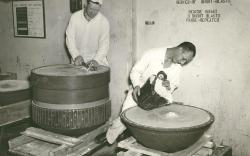
Built in 1880 as the Piccatinny Powder Depot, this site was the major supplier of smokeless powder to the military for many years.

The St. Petersburg Yacht Basin was the original operating location of the St. Petersburg – Tampa Airboat Line, the nation’s first, regularly-scheduled commercial airline. The line’s inaugural flight was on January 1, 1914, with two daily, round-trip flights between St. Petersburg, Fla., and…
Read More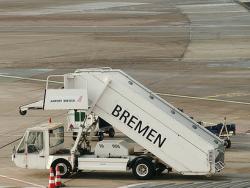
Bremen Airport was founded in 1909. In 1924, German aviation pioneers Henrich Focke and Georg Wulf founded the Focke-Wulf company on the site. On June 26, 1936, Heinrich Focke’s Fw 61, the world’s first fully operational helicopter, made a successful maiden flight at the airport, piloted by…
Read More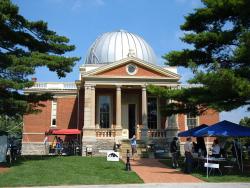
The Cincinnati Observatory, founded by Ormsby MacKnight Mitchel in 1842, is America’s oldest public/professional observatory. The observatory was situated on Mt. Adams, east of the current downtown Cincinnati; the hill was named for former President John Quincy Adams when he laid the observatory…
Read MoreDelta Air Lines’ historic buildings consist of two aircraft hangers and several office buildings at the Delta World Headquarters site constructed between 1941 and 1947. On March 1, 1941, Delta Air Lines moved its corporate headquarters to Atlanta, constructing offices space and Hangar 1, the…
Read More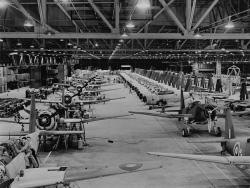
Established in 1929, and owned by several different aviation companies through its history, the Downey site was the design, test, and production site for various airplanes and spacecraft that defined American aerospace accomplishments in the 20th century. Its rich legacy includes the P-51…
Read More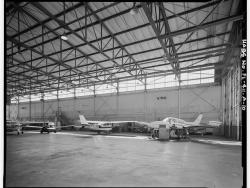
Established in 1935 as the Valparaiso Bombing and Gunnery Base, the base supported the U.S. Army Air Corps, the predecessor to the U.S. Air Force, as its primary facility for training new pilots in bombing and gunnery tactics. It also served as a test facility for aircraft, aircraft armament,…
Read More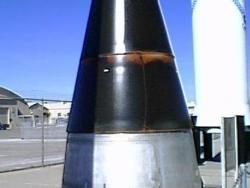
From 1956 to 1993, the GE Re-entry Systems facility was home to thousands of engineers and technicians who solved the problem of vehicles successfully reentering the Earth’s atmosphere. As described by aerospace pioneer Theodore Von Karman, “ Reentry… is perhaps the most difficult problem one…
Read More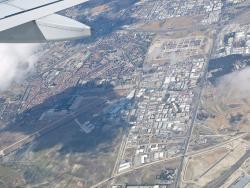
Getafe Airfield was the site of the world’s first successful rotorcraft flight, on January 17, 1923. Lieutenant Alejandro Gómez Spencer piloted a C.4 Autogiro designed and built by Juan de la Cierva, who tested a series of autogiros between 1920 and 1924 at the Getafe site. Cierva’s autogiros…
Read More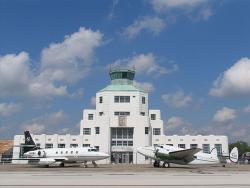
The terminal, designed by noted architect Joseph Finger and built by the Works Progress Administration, is a rare remaining example of classic art deco airport architecture, featuring the distinctive design elements of that age: step forms, sweeping curves, and intricate geometrical patterns and…
Read More
Established in 1939 by the National Advisory Committee for Aeronautics (NACA), and named after NACA’s first chairman, Joseph S. Ames, the center has been at the forefront of American, and worldwide, aeronautics research. From its earliest days, the center has made noteworthy contributions to the…
Read MoreEstablished 1965 the Tidbinbilla Tracking Station, as well as the Honeysuckle Creek (1967-1981) and Orroral Valley (1965-1985) sites, supported NASA’s Deep Space Network, Manned Space Flight Network, and Spacecraft Tracking and Data Acquisition Network. The stations played a key role in…
Read MoreEstablished 1965 the Orroral Valley Station, as well as the Honeysuckle Creek (1967) and Tidbinbilla (1965) sites supported NASA’s Deep Space Network, Manned Space Flight Network, and Spacecraft Tracking and Data Acquisition Network. The stations played a key role in supporting the Apollo 11…
Read MoreEstablished between 1967, the Honeysuckle Creek Tracking Station, along with the Tidbinbilla and Orroral Valley sites, supported NASA’s Deep Space Network, Manned Space Flight Network, and Spacecraft Tracking and Data Acquisition Network. The stations played a key role in supporting the Apollo…
Read More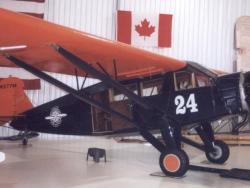
The Travel Air Airplane Manufacturing Company served as the incubator in which Wichita Kansas’ present-day status as the world’s “Air Capital” first developed. The firm was among the first viable airplane manufacturers to be established in Wichita (1925). It also was responsible for four…
Read More
Vandenberg Air Force Base was the nation’s first space and ballistic missile operational and training base. Beginning with its first launch, a Thor Intermediate Range Ballistic Missile (IRBM) on December 16, 1958, it has been the launch site of many of America’s military satellites and polar-…
Read More
Tracing its history to the earliest days of powered flight – to the Wright brothers and Glenn Curtiss – the site began as the research laboratory of the Curtiss-Wright Aircraft Company. After World War II, it was donated to Cornell University, and in January 1946 opened its doors as the Cornell…
Read MoreOn 19 August, the AIAA Historic Aerospace Sites Committee dedicated Kitty Hawk, NC, as a historic aerospace site, following a decades-long negotiation with the U.S Park Service. A historic marker was unveiled at a 0930 hrs ceremony as part of the First Flight Society’s National Aviation Day at…
Read More
Bell Aircraft, founded in 1935 by Lawrence Dale “Larry” Bell, based its primary manufacturing facility in Wheatfield, New York, where several important aircraft were designed and produced. During the World War II era, the plant produced the P-39 Airacobra and the P-63 Kingcobra fighters. The P-…
Read More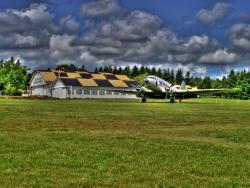
Pearson Field, named for U.S. Army Lt. Alexander Pearson Jr., a prominent early aviator who died in an airplane crash in 1925, is the oldest continuously operating airfield in the Pacific Northwest, and one of the oldest in the United States. In 1905, the field, then known as the Fort Vancouver…
Read More
Getafe Airfield was the site of the world’s first successful rotorcraft flight, on January 17, 1923. Lieutenant Alejandro Gómez Spencer piloted a C.4 Autogiro designed and built by Juan de la Cierva, who tested a series of autogiros between 1920 and 1924 at the Getafe site. Cierva’s autogiros…
Read More

